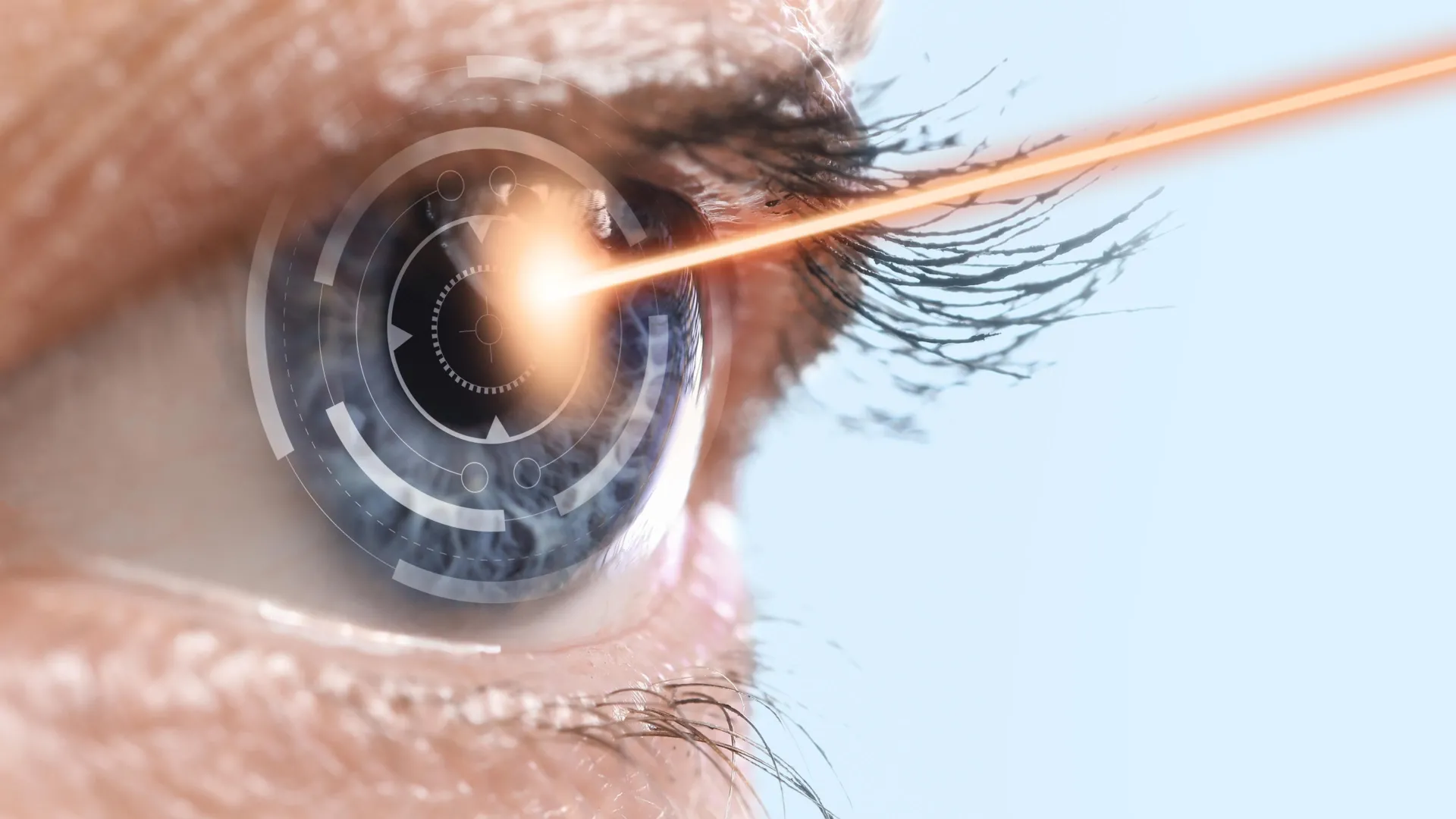New laser treatment could stop blindness before it starts
A new laser treatment may halt dry macular degeneration by using controlled warmth to trigger the eye’s self-repair mechanisms.
- Date:
- November 8, 2025
- Source:
- Aalto University
- Summary:
- Aalto University scientists have created a laser-based treatment that uses gentle heat to stop the progression of dry macular degeneration. The approach stimulates the eye’s natural cleanup and repair systems to protect against blindness.
- Share:

Roughly one in three people over the age of 80 experiences age-related macular degeneration (AMD), a condition that affects the retina and leads to central vision loss. In the United States, about 20 million adults aged 40 and older are currently living with AMD. The vast majority have the "dry" form, which develops gradually and eventually causes difficulty seeing objects directly in front of them. Despite being one of the most common causes of vision impairment among older adults, there is still no effective treatment for dry AMD.
Researchers at Aalto University have identified a promising new way to slow or even halt the early stages of dry AMD. Their approach focuses on reinforcing the natural defense systems of retinal cells by applying controlled heat, according to Professor Ari Koskelainen.
"Cellular functionality and protective mechanisms weaken with age, which exposes the fundus [the inside surface at the back of the eye] to intense oxidative stress," Koskelainen explains. "Free oxygen radicals damage proteins, which causes them to misfold and aggregate, then fatty protein deposits called drusen begin to accumulate, which is the main diagnostic criterion for the dry form of age-related macular degeneration."
Using Heat to Trigger the Eye's Repair Response
The treatment involves carefully warming the affected tissue by several degrees, a challenging task because it is difficult to measure temperature behind the retina. Temperatures above 45 degrees Celsius can damage tissue, but the Aalto team developed a method that allows real-time temperature monitoring while heating the area with near infrared light. This enables safe, precise control while using heat to activate the eye's natural healing responses at a cellular level.
When proteins inside the eye misfold, cells can respond in several ways. One mechanism involves heat shock proteins, which are produced in response to stress and can help refold damaged proteins into their original structure. If that process fails, the faulty proteins are targeted for breakdown into amino acids so they can be recycled.
If protein build-up has already occurred, another mechanism called autophagy takes over. This process, discovered by Nobel laureate Yoshinori Ohsumi in 2016, encloses the accumulation within a lipid membrane similar to a cell membrane. Recognition proteins on the membrane's surface then signal lysosomal enzymes to begin breaking down and removing damaged material.
"We were able to show that we can activate not only the production of the heat shock proteins, but also autophagy using the heat shocks. This process is like waste disposal," says Koskelainen.
Promising Results and Next Steps
The new technique has already produced positive results in animal studies involving mice and pigs. Human clinical trials are scheduled to begin in Finland in the spring of 2026. The first phase will focus on confirming the safety of the laser treatment before moving on to determine how frequently it should be repeated for lasting results.
"The treatment needs to be repetitive, since the response can already begin to decline some days after the treatment," Koskelainen says.
The findings were published in Nature Communications on October 29. The research team has also launched a spin-off company, Maculaser, to help bring the therapy to clinical use.
"An optimistic schedule would see the method already being used in hospital eye clinics in as little as three years' time," Koskelainen adds. "The eventual goal is that it would be readily available at your local ophthalmologist."
Story Source:
Materials provided by Aalto University. Note: Content may be edited for style and length.
Journal Reference:
- Mooud Amirkavei, Ossi Kaikkonen, Teemu Turunen, Anna Meller, Johanna Åhlgren, Anders Kvanta, Helder André, Ari Koskelainen. Non-damaging laser treatment with electroretinography-based thermal dosimetry activates hormetic heat response in pig retinal pigment epithelium. Nature Communications, 2025; 16 (1) DOI: 10.1038/s41467-025-64095-6
Cite This Page: